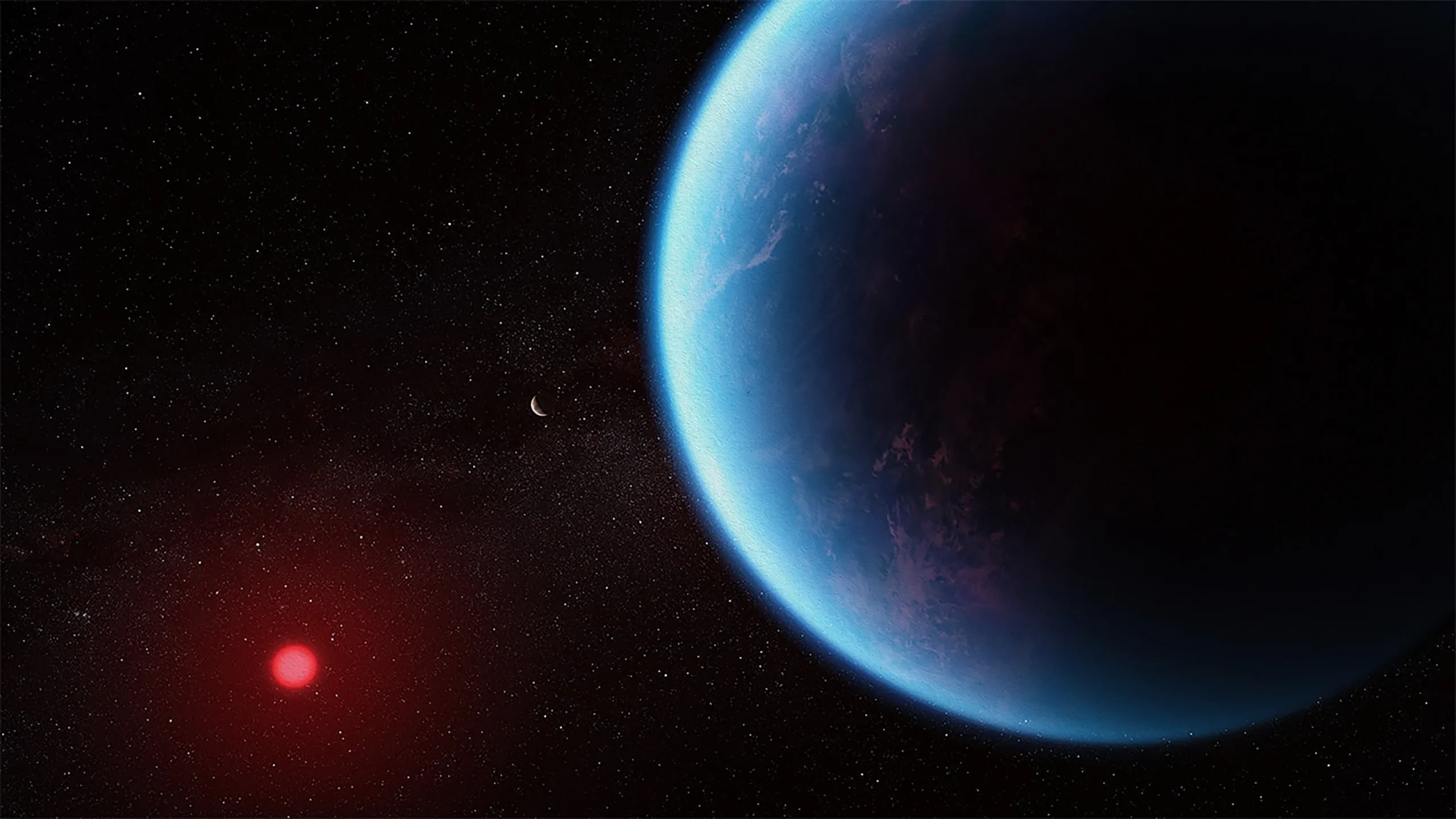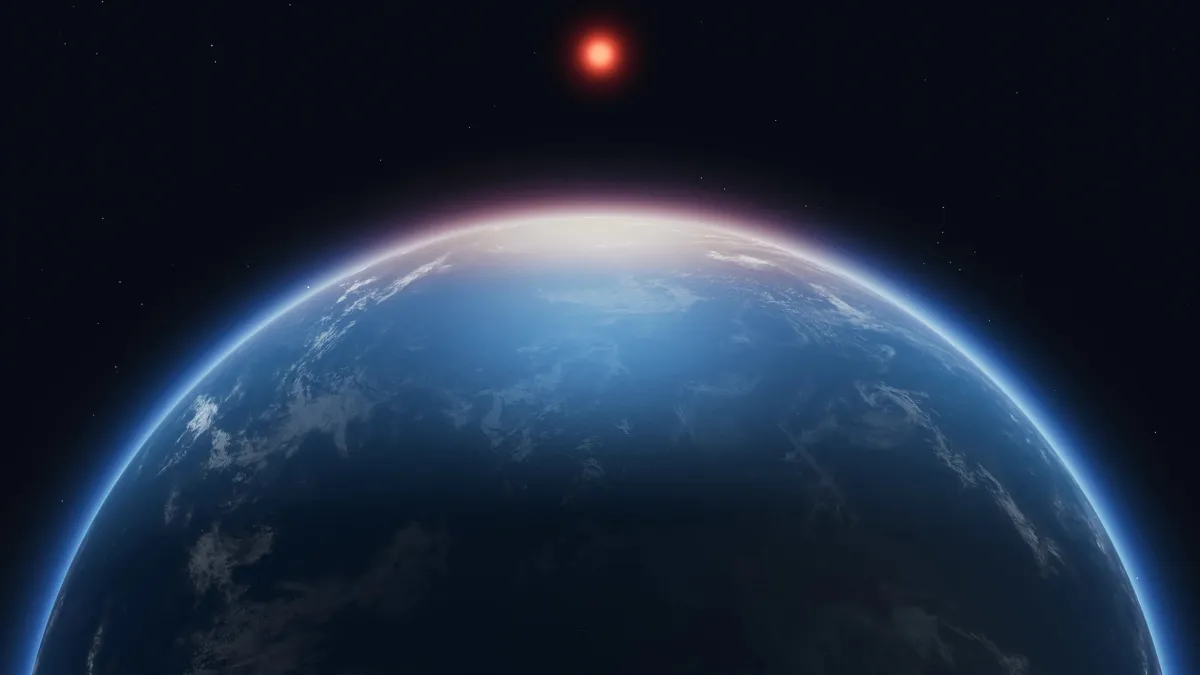Hycean worlds are a proposed type of exoplanet characterized by deep oceans and thick hydrogen-rich atmospheres. These planets may offer a unique opportunity for detecting biosignatures—chemical markers indicating the presence of life—using the James Webb Space Telescope (JWST).
One potential biosignature identified in a recent study is a group of chemicals called methyl halides, which are produced by bacteria and ocean algae on Earth. Hycean planets are thought to provide a much clearer signal for detecting these markers compared to Earth-like planets.
Astrobiologist Eddie Schwieterman from the University of California, Riverside, explains that detecting biosignatures on Earth-like planets is challenging due to atmospheric noise and telescope limitations. Hycean planets, however, have a thick hydrogen envelope that could allow for clearer signals.
While these planets remain hypothetical, their potential for biosignature detection is drawing increasing interest in the field of astrobiology. The term “hycean” was first coined in 2021 by planetary scientist Nikku Madhusudhan to describe these planets.
K2-18b: A Prime Candidate for Hycean Worlds with Potential Biosignatures Detection
Hycean planets are predicted to orbit red dwarf stars, and K2-18b is considered one of the best candidates for such a world. Located 124 light-years away in the constellation Leo, K2-18b is a “sub-Neptune” planet that resides within its star’s habitable zone.
Observations by the Hubble Space Telescope and JWST have detected water vapor, carbon dioxide, and methane in the planet’s atmosphere, with the latter two gases aligning with the hycean planet hypothesis. There’s also tentative evidence of dimethyl sulfide, a compound produced by Earth’s ocean plankton, in the planet’s atmosphere, though this finding remains debated.

A new study led by Michaela Leung at the University of California, Riverside, suggests that methyl halides—organic compounds produced by microbial ocean life on Earth—could be another potential biosignature for hycean worlds. These compounds are composed of carbon, hydrogen, and halogens such as bromine, chlorine, or fluorine.
While they are rare in Earth’s atmosphere, they could accumulate in large quantities on hycean planets, where conditions may favor their formation. Methyl halides also have strong absorption features in the infrared spectrum, making them detectable by JWST in just a few hours, offering a more efficient and cost-effective way to search for biosignatures.
Challenges in Confirming Hycean Worlds’ Existence and Their Potential for Life Development
Despite the potential of hycean worlds, there are significant challenges to confirming their existence. These planets were proposed to explain the characteristics of warm sub-Neptune-type exoplanets with thick hydrogen atmospheres and deep oceans, but directly observing an ocean beneath the hydrogen envelope is currently impossible.
Additionally, while hycean planets could provide an environment suitable for life, it remains unclear whether the oceans beneath the thick atmospheres would be too hot to support life as we know it. Further research and technological advancements are needed to confirm the presence of hycean planets and their potential habitability.
If life does exist on hycean worlds, it would likely be anaerobic, meaning it could survive without oxygen, as these planets’ environments would not support the oxygen-dependent life forms that dominate Earth. Schwieterman notes that these microbes would adapt to their unique surroundings, and the gases they produce, such as methyl halides, could offer insight into their metabolism.
Red dwarf stars, which make up about 75% of stars in the Milky Way, may host many more hycean worlds than Earth-like planets. As such, hycean worlds could be key to understanding the potential for life in the universe, particularly in environments that are vastly different from our own.


